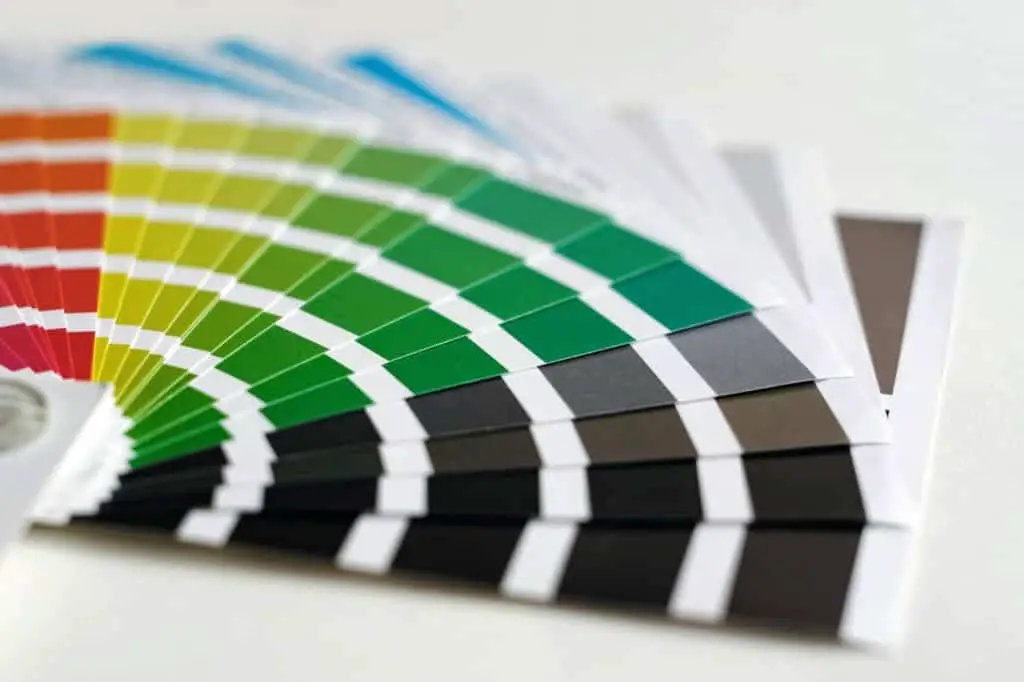
To find out the paint you need to use for specific painting work, first, you need to see whether the area you are about to paint, has contact with water. Bathroom, kitchen or laundry would need water-resistant paint. You also need to see what kind of surface you will be painting – cement or brick, wood or metal.
- For dry and indoor areas, latex paint will do the job.
- For exterior painting or wet areas (bathroom, kitchen, laundry), acrylic paint is the right choice.
- For wet areas, it is also possible to use epoxy paint. This type of paint can be applied to walls, floors, tiles, steel, pools, and water storage containers. Epoxy paint is usually more expensive than acrylic paint, but it can withstand heavy cleaning and lasts longer.
Regardless of the area, if the surface is wood or metal, you can apply enamel paint.
Choosing paint finishing
There are three types of paint finishing – matte paint, satin paint (also called semi-gloss) and gloss paint. Which type of paint finish you chose, will influence how the surface will look like and how long the paint will last.
The more gloss the paint has, the more durable it will be as it contains more resin ingredient. On the other hand, the brighter the paint, the more imperfections appear on the wall and the more difficult it is to remove them and repaint. Generally, the more brightness there is, the longer the durability and higher the price.
Choosing paint budget
There are three types of paint:
- premium (high yield),
- standard (average yield) and
- economic (low yield).
The higher the quality of the paint, the higher the price. Also, with higher quality paint, you will need to apply fewer coats. And, due to the fact that there are fewer layers, the finished surface will look better.
Choosing paint color
Try it first before you buy the paint for the entire project. First, buy small cans of paint for testing and paint squares of various colors on the wall or surface you plan to paint, to choose from, and what pleases you the most. Make sure you let the painted areas dry, as the color may change slightly. Buy the total amount after you are sure of the tone you have chosen.
Be Renovative Tip: do not buy paint that has expired. Make sure you check the expiration date on the can.
Choosing paint that lasts longer
What defines that paint will last longer is its composition and quality of the components used to make it. With that in mind, all types of paint generally fall into three categories. Here is the estimated breakdown of how long paint will last:
- the economic lines last approximately one year,
- the standard lines would last two or three years,
- the premium lines can last for up to five years.
In general, main paint manufacturers make the three lines of paint for all types (latex, acrylic, epoxy, enamel) and all colors. Before making your purchase decision, make sure, you clearly understand what line you decide to use for your project and what to expect from it.
For the painting to last longer, it generally makes good sense to chose among premium lines. This type of paint will cost a bit more, but it will also yield better and will look good for quite a bit longer.
Also keep in mind that for the paint to last longer, it is not enough to choose the premium line of paint, which gives a better quality of the product. The surface must be well prepared before it can be painted.
Read also: How to paint a perfect wall? – in this article. And, How not to paint? – in this article.
You also need to wait the required time between the coats, use certified paint, and choose the right paint for each type of surface (cement or brick, wood, metal, or ceramics) and environment (internal/ or external, dry or wet). If you do not follow these general guidelines, event premium line paint will work out.
How to paint without hiring a painter?
Lots of people would prefer to do the paintwork without hiring a professional painter. This may sound easy at first, but it takes knowing the right information and doing the right steps to get the job done correctly. Here are a few common questions and answers.
How to prepare the wall for painting?
Taking the time to prepare the wall for painting is crucial to achieving a good result and preventing problems later.
Start by taking a look at the wall. Does the wall have dirty spots? Does it have mold? Does it have peeling paint? Does it have cracks or holes?
Take time to prepare the surface
Even when the wall looks great (no dirt, no stains, no cracks, no holes, no peeling paint), here are basic steps to prepare the wall for painting:
- wash and dry the surface first,
- then sand the wall (use sanding paper #36) and
- remove dust with a dust mop and a damp cloth.
If you ask a painter to do the job, the painter needs to follow the same routine – wash and dry the surface and sand the wall before painting. This is a basic preparation. If this is not done, the paint may start peeling off later.
If the wall has stains or grease, it should be washed with mild soap and water.
In case the wall is moldy, wash it with bleach and leave it for one hour before rinsing the bleach off. Wait for the surface to dry.
If you see peeling paint, or the wall is covered with wallpaper, make sure you sand the wall or scrape with a spatula if it is very uneven.
If your wall is a plaster wall and the plaster is crumbling, it is likely that it needs to be taken off and redone completely.
When to use spackling paste?
Only after the initial preparation is done, it is the right time to begin to use spackling to correct wall irregularities and to cover small holes (like the nail holes, for example) before beginning to paint.
Use PVA spackling paste for indoor environments and acrylic spackling paste for outdoor or wet areas (bathroom, kitchen, laundry). If the imperfections are too deep, apply filling grout to start with. Allow the repaired part of the wall to dry before using the spackling paste.
If the holes are really large and deep, the affected part of the wall should be first repaired prior to applying any paint, grout or spackling paste.
The spackling should be allowed to dry and then wall preparation needs to be done. And only after that, you can start your painting job.
Any wall can be painted?
Yes, any wall can be painted. But keep an eye on the type of surface you have. Make sure it is ready for paint or needs some preparation before.
If this is a new wall and it has just been built, the plaster wall needs to be allowed dry for 28 days prior to any paint preparation. It is also a good practice to use a sealer on the plaster before applying any spackling mass to correct irregularities. It serves to fill very porous surfaces as it penetrates and expands making it more uniform to receive paint. This preparation gives a higher yield to the paint.
Plaster wall
You can use a repairing grounding before painting a plaster wall. It fixes loose particles and improves the adhesion of the paint.
Brick wall
If you plan to paint a brick wall, for the bricks to remain visible, obviously you will not be able to apply either plaster or mass. Still, a brick wall should be waterproofed. After this is done, you can paint it.

